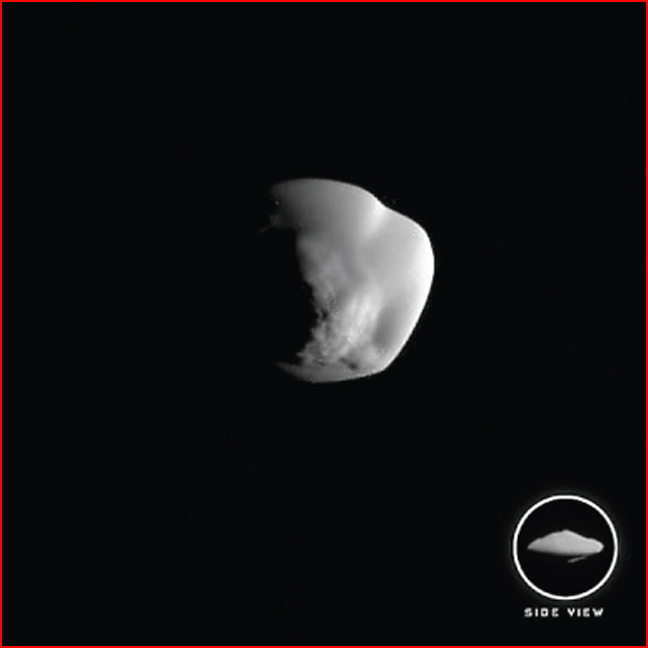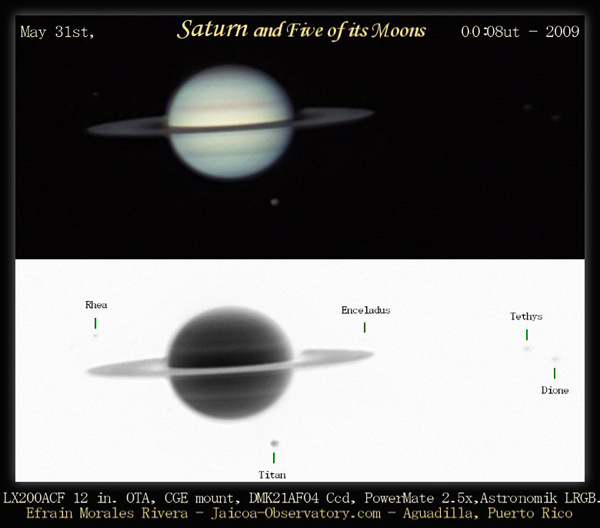

Saturn now has 121 known irregular moons along with its 24 regular moons. The newly discovered moons of Saturn are classified as "irregular moons." This term refers to objects that are believed to have been captured by a planet's gravitational influence and end up orbiting it on large, flattened or "elliptical" paths that are more inclined in comparison to the orbits of regular moons. Saturn's irregular moons may have a violent history Related: Solar system planets, order and formation: A guide "But with about 100 different games on the same page, and you don't know which dot belongs to which puzzle."

"Tracking these moons makes me recall playing the kid's game Dot-to-Dot, because we have to connect the various appearances of these moons in our data with a viable orbit," Ashton said in a statement. One of these satellites was revealed back in 2021, with the remaining 62 moons gradually announced over the past few weeks. Performing a painstaking process of matching objects detected on different nights over the course of 24 months, the team tracked 63 objects that they ended up confirming as moons. To change these objects from "suspected moons" to "confirmed moons" of Saturn, the astronomers had to track them for several years to ensure each is actually orbiting the gas giant. Though some of the moons had been spotted as early as 2019, it takes more than sighting an object close to a planet to confirm it is a moon and not an asteroid making a brief close passage to that planet. That's about two-thirds the length of Hollywood's Walk of Fame. It allowed the astronomers to detect moons around Saturn as small as 1.6 miles (2.5 kilometers) in diameter. The data used by the team was collected between 20 in three-hour spans by the Canada-France-Hawaii Telescope (CFHT) on top of Maunakea in Hawaii. Moons that are too faint to be seen in single images can reveal themselves in the resultant "stacked image."Īstronomers have used this method to search for moons around the ice giants Neptune and Uranus, but this is the first time it has been applied to the solar system's second-largest planet, Saturn. Retrieved 20 December 2011.The technique uses a set of images shifting at the same speed at which a moon moves through the sky to enhance the signal from that moon. "Enceladus: Cosmic Graffiti Artist Caught in the Act". "Sizes, shapes, and derived properties of the saturnian satellites after the Cassini nominal mission" (PDF). "Saturn satellite observations and orbits from the 1980 ring plane crossing". "New Close-Ups of Saturn's Moons Mimas and Calypso". ^ NASA Celestia Archived at the Wayback Machine.

Archived from the original on March 22, 2020. Lexico UK English Dictionary UK English Dictionary. This very high albedo is the result of the sandblasting of particles from Saturn's E-ring, a faint ring composed of small, water-ice particles generated by Enceladus' south polar geysers. Its surface is one of the most reflective (at visual wavelengths) in the Solar System, with a visual geometric albedo of 1.34. Like many other small Saturnian moons and small asteroids, Calypso is irregularly shaped, has overlapping large craters, and appears to also have loose surface material capable of smoothing the craters' appearance. Calypso and Telesto have been termed "Tethys trojans", by analogy to the trojan asteroids, and are half of the four presently known trojan moons. The moon Telesto resides in the other (leading) Lagrangian point of Tethys, 60 degrees in the other direction from Tethys. This relationship was first identified by Seidelmann et al.

It is also designated Saturn XIV or Tethys C.Ĭalypso is co-orbital with the moon Tethys, and resides in Tethys' trailing Lagrangian point ( L 5), 60 degrees behind Tethys. In 1983 it was officially named after Calypso of Greek mythology. Several other apparitions of it were recorded in the following months: S/1980 S 29, S/1980 S 30, S/1980 S 32, and S/1981 S 2. Currie, and was provisionally designated S/1980 S 25 (the 25th satellite of Saturn discovered in 1980). It was discovered in 1980, from ground-based observations, by Dan Pascu, P.


 0 kommentar(er)
0 kommentar(er)
